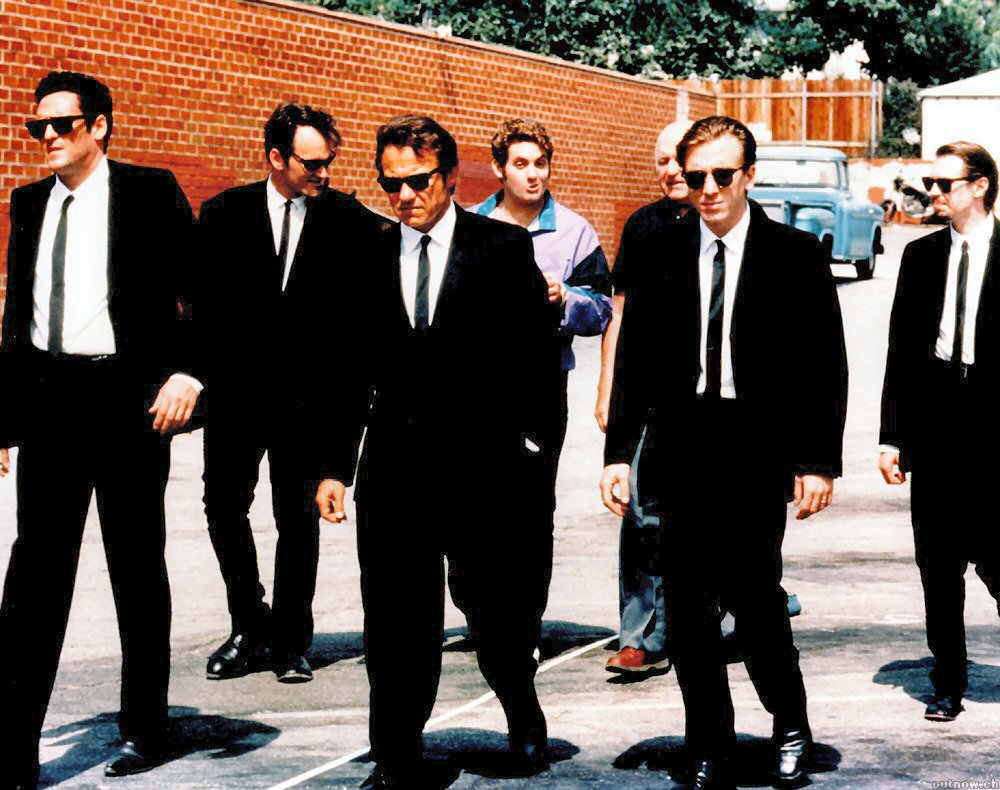Unveiling The Masterpiece: A Comprehensive Analysis Of Reservoir Dogs (1992)
Reservoir Dogs (1992) is a film that has transcended time, captivating audiences with its gritty storytelling and unique narrative style. Directed by Quentin Tarantino, this seminal work not only defined a genre but also paved the way for independent filmmakers. In the following sections, we will delve deep into the intricacies of the film, exploring its plot, characters, impact, and much more.
As we navigate through the world of Reservoir Dogs, we will highlight key themes, production details, and the cultural significance of this cinematic jewel. With its non-linear storytelling and memorable dialogues, the film has garnered a dedicated fan base and critical acclaim, making it a topic worthy of discussion and analysis.
Join us as we explore the layers of Reservoir Dogs, examining how it has influenced the landscape of modern cinema and why it remains a favorite among film enthusiasts. Whether you are a long-time fan or new to the film, this article aims to provide a thorough understanding of its brilliance.
Table of Contents
- 1. Biography of Reservoir Dogs
- 2. Plot Summary
- 3. Character Analysis
- 4. Key Themes
- 5. Cultural Impact
- 6. Production Details
- 7. Critical Reception
- 8. Conclusion
1. Biography of Reservoir Dogs
Reservoir Dogs is Quentin Tarantino's debut film, released in 1992. It was produced independently and quickly became a cult classic. The film's narrative revolves around a botched diamond heist and the subsequent fallout among the criminals involved.
| Title | Reservoir Dogs |
|---|---|
| Director | Quentin Tarantino |
| Release Date | October 23, 1992 |
| Genre | Crime, Thriller |
| Production Company | Lawrence Bender Productions |
| Running Time | 99 minutes |
| Language | English |
2. Plot Summary
The film opens with a group of criminals, each assigned a color-coded alias, discussing a recent heist. The narrative unfolds through flashbacks, revealing the events leading up to the heist and its disastrous aftermath. The audience is taken on a rollercoaster ride of tension and intrigue as the survivors try to uncover the identity of the informant within their ranks.
Key plot points include:
- The introduction of the characters and their aliases.
- The heist itself, which goes awry due to unexpected police presence.
- The subsequent paranoia and accusations among the gang members.
- The brutal interrogation scenes that highlight the film's gritty nature.
3. Character Analysis
Reservoir Dogs features a standout ensemble cast, each bringing their character to life in a memorable way. The main characters include:
- Mr. White (Harvey Keitel): A seasoned criminal who feels a sense of loyalty to his comrades.
- Mr. Orange (Tim Roth): An undercover cop whose true identity is a central twist.
- Mr. Pink (Steve Buscemi): A pragmatic thief who is skeptical of authority.
- Mr. Blonde (Michael Madsen): A psychopathic criminal known for his violent tendencies.
3.1 Character Dynamics
The interactions between the characters are tense and often lead to violent confrontations. Each character's backstory adds depth to the narrative, making the audience question their motivations and loyalties.
4. Key Themes
Reservoir Dogs explores several critical themes that contribute to its lasting impact:
- Loyalty and Betrayal: The film questions the nature of loyalty among criminals and the consequences of betrayal.
- Identity: The use of color-coded aliases highlights the theme of identity and the masks people wear.
- Violence: The film does not shy away from depicting violence, raising questions about its role in society.
5. Cultural Impact
Reservoir Dogs has left an indelible mark on popular culture. Its influence can be seen in various media, from films to television shows. The film's non-linear storytelling and sharp dialogue have inspired a generation of filmmakers.
Noteworthy impacts include:
- Revival of independent cinema in the early '90s.
- Inspiration for films such as Pulp Fiction, which further solidified Tarantino's reputation.
- Cult following that has led to numerous references in various forms of media.
6. Production Details
The production of Reservoir Dogs was a challenging yet rewarding experience. Filming took place primarily in Los Angeles, with a limited budget that forced creative solutions.
Key production aspects include:
- Low-budget filmmaking techniques that contributed to its raw aesthetic.
- Strong collaboration between Tarantino and the cast, fostering an environment of creativity.
- The iconic soundtrack that complements the film's tone and enhances its storytelling.
7. Critical Reception
Upon its release, Reservoir Dogs received critical acclaim, with many praising Tarantino's direction and the film's originality. It has since been regarded as a classic in the crime genre.
Key points of reception include:
- Positive reviews from major publications and film critics.
- Recognition at various film festivals, solidifying its status as an independent success.
- Ongoing discussions about its themes and impact on modern cinema.
8. Conclusion
Reservoir Dogs remains a defining work in the landscape of cinema, showcasing Quentin Tarantino's unique vision and storytelling prowess. Its exploration of loyalty, identity, and violence continues to resonate with audiences today.
As we reflect on the film's legacy, we invite you to share your thoughts in the comments below or explore other articles on our site to delve deeper into the world of cinema.
Thank you for joining us on this journey through Reservoir Dogs. We hope this article has enriched your understanding of this iconic film and inspired you to revisit its gripping narrative.
Unlocking The Secrets Of Image Juicy: A Comprehensive Guide
MST3K Joel: The Legacy Of Comedy And Science Fiction
Understanding Extraction Rated: A Comprehensive Guide


